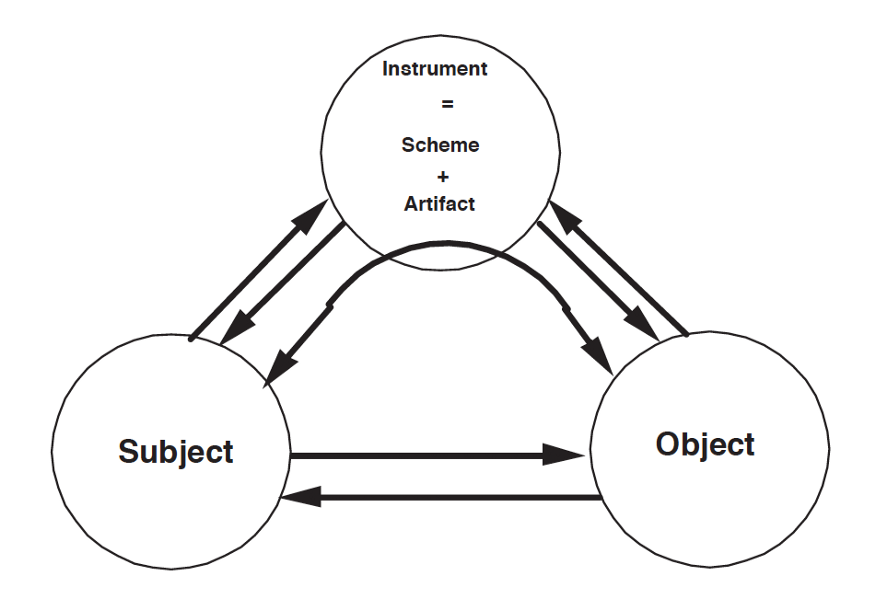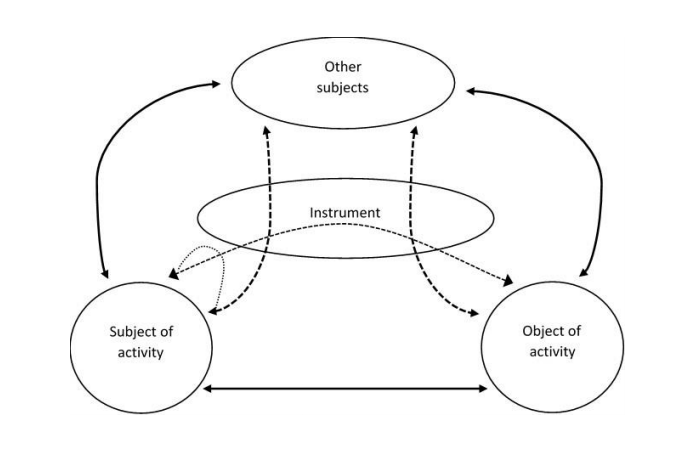Pierre Rabardel: Instrumental Genesis [Activity Theory]
![Pierre Rabardel: Instrumental Genesis [Activity Theory]](https://images.unsplash.com/photo-1590054387835-ab72678fef01?crop=entropy&cs=tinysrgb&fit=max&fm=jpg&ixid=MnwxMTc3M3wwfDF8c2VhcmNofDV8fGluc3RydW1lbnR8ZW58MHx8fHwxNjM0MTY3NjMw&ixlib=rb-1.2.1&q=80&w=960)
Activity Theory or the “Cultural-historical activity theory (CHAT)” is an interdisciplinary philosophical framework for studying both individual and social aspects of human behavior. According to Kaptelinin & Nardi (2012), “The immediate conceptual origins of activity can be found in Russian/Soviet psychology of the 1920s and 1930s. During that time theoretical explorations in Russian psychology were heavily influenced by Marxist philosophy… Leontiev’s activity theory emerged as an outgrowth of the sociocultural perspective. The theory employs a number of ideas developed by Lev Vygotsky, Leontiev’s mentor and friend. It is also strongly influenced by the work of Sergei Rubinshtein, a major figure in Russian psychology and a long-time colleague of Leontiev.”(p.13–14)
The diagram below selects several approaches to Activity Theory. This article focuses on one approach: Pierre Rabardel's Instrumental Genesis.

One Abstract Model I want to mention is Instrumental Genesis theory developed by Pierre Rabardel who is a French teacher-researcher specializing in psychology and ergonomics.
The terms “object, artefacts, instruments tools” are used by many researchers with various meanings.
Rabardel (1995) went back to Vygotsky’s ideas and made a distinction between the “physical object” and the “physical object which in used” by introducing a new concept called Instrument. He suggested that the instrument has two components, one is utilization schemes which refer to psychological structures for organizing the activity, and the other one is produced artifacts that may be material or symbolic.

By redefining the concept of Instrument, Rabardel further pointed out different dimensions of mediation which is also a core concept of activity theory. He used design activity as an example (subject=designer, object=the objective of design activity) to describe three types of mediation at different phases of the design activity.
During the production phase, there is “pragmatic mediation” between the subject and the object of the activity.
During the draft phase, the instrument performs “epistemic mediation” between the subject and the object of the activity.
During the review phase, there is “heuristic mediation”: the subject orients and controls his/her activity in line with the progress of his ongoing activity. (Béguin & Rabardel, 2000).
Rabardel also developed the CIAS (Collective Instrumented Activities and Situations) model for the analysis of the appropriation processes involved in group activities mediated by artifacts. The diagram below is one type of diagram of the CIAS model.

The CIAS Model of Instrumented Activity added “Other subjects” to the original diagram of instrumented activity and presents represents three types of mediation in the instrumented activity:
- object mediations: directed towards the object of the activity
- interpersonal mediations: directed towards the other subjects
- reflexive mediations: towards the subject itself
Based on the concept of Instrumented Activity, Rabardel coined a new term called instrumental genesis for discussing developmental transformation which is also an important agenda of activity theory. The instrumental genesis has two sub-processes, the first is the artifact-oriented instrumentalization process which refers to the evolution of the material side of the instrument, and the second is the subject-oriented instrumentation process which refers to the emergence and evolution of the subject’s utilization schemes.
